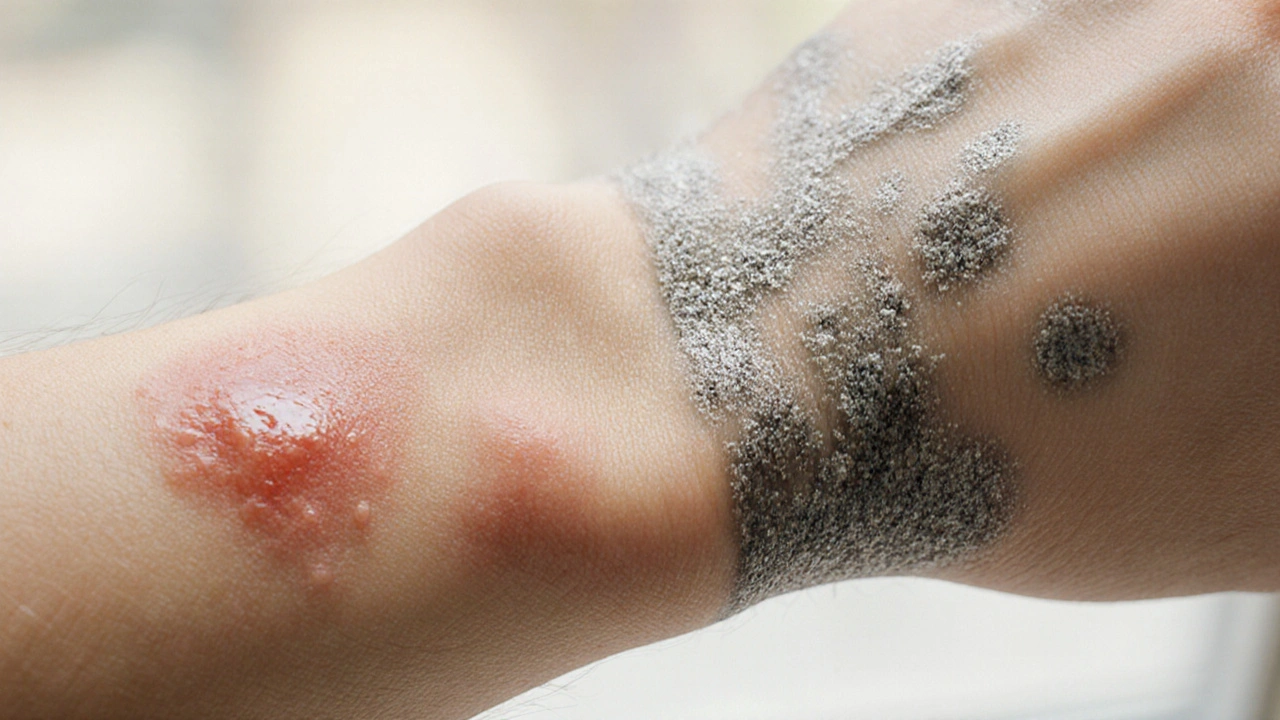Skin Condition Identification – Quick Tips to Spot Common Issues
Ever looked in the mirror and wondered what that red bump or flaky patch means? You’re not alone. Most people see a new skin change and feel unsure whether it’s harmless or needs attention. The good news is you can do a simple check at home before you call the doctor. This guide walks you through the basics so you can feel confident about what you’re seeing.
What to Look at First
Start with three questions: size, shape, and feeling. Measure the spot with a ruler or the tip of a coin – is it under a centimeter or larger? Note the shape: is it round, irregular, or spreading outward? Finally, pay attention to sensation. Itching, burning, or pain can signal a different problem than a dry, silent patch. Write down these details; they help any clinician understand what’s going on.
Color matters too. Red, pink, brown, or white each have clues. A bright red rash that comes on quickly often points to an allergic reaction or infection. Brown spots that grow slowly could be a sign of a benign mole or, in rare cases, skin cancer. White, scaly areas are typical for psoriasis or eczema. Keep a mental note of any changes over a few days – static spots are usually less worrisome than those that evolve fast.
When to See a Dermatologist
Not every bump needs a prescription, but some signs mean you should act fast. If a lesion bleeds, oozes, or doesn’t heal after two weeks, book an appointment. Sores that itch intensely, spread rapidly, or appear after a sunburn could be a skin infection or early skin cancer. Also, if you have a history of melanoma, any new mole deserves a professional look.
Other red flags include sudden swelling, severe pain, or a rash that covers a large area of your body. These could indicate an allergic reaction or systemic issue that needs urgent care. When in doubt, call your dermatologist’s office and describe the symptoms; they can tell you whether you need a same‑day visit.
Remember, self‑checks are a tool, not a substitute for medical advice. Using these steps helps you catch problems early and gives doctors a clear picture when you do get an appointment.
Finally, protect your skin after you’ve identified an issue. Keep the area clean, avoid scratching, and use gentle moisturizers if dryness is a factor. If you suspect an infection, over‑the‑counter antiseptic creams can help, but stop using them if the spot gets worse.
By taking a few minutes each week to examine your skin, you’ll spot changes before they become serious. Keep a simple log, know the warning signs, and don’t hesitate to reach out to a dermatologist when something feels off. Your skin will thank you for the extra attention.
How to Tell If a Skin Rash Is Actually a Disorder
Learn how to tell a short‑lived skin rash from a chronic skin disorder with easy signs, a comparison table, and practical steps for home care or professional help.
